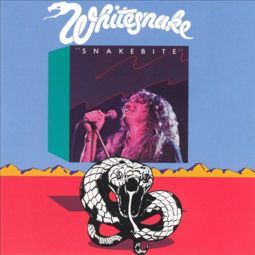
Copperhead Snake Bite: A Comprehensive Guide
When it comes to venomous reptiles, the copperhead snake (Agkistrodon contortrix) is one of the most feared and misunderstood creatures. If you find yourself in a situation where you’ve been bitten by a copperhead, it’s crucial to understand the symptoms, treatment, and prevention measures. This article will delve into the details of a copperhead snake bite, providing you with a comprehensive guide to help you navigate through this potentially dangerous situation.
Understanding the Copperhead Snake

The copperhead is a member of the pit viper family and is native to the United States. These snakes are typically found in forests, woodlands, and brushy areas, where they hunt for small mammals, birds, and amphibians. Despite their intimidating appearance, copperheads are generally non-aggressive and will only bite when threatened or cornered.
Here are some key characteristics of the copperhead snake:
| Characteristics | Description |
|---|---|
| Length | Typically ranges from 2 to 3 feet (0.6 to 0.9 meters) |
| Color | Has a brownish-red or copper-colored body with dark bands and a distinctive hourglass-shaped marking on its back |
| Head | Has a triangular-shaped head, which is a characteristic of all vipers |
| Venom | Produces a hemotoxic venom, which affects the blood and tissues |
Recognizing the Symptoms of a Copperhead Snake Bite

After being bitten by a copperhead, it’s essential to recognize the symptoms to determine the severity of the bite and the need for medical attention. Here are some common symptoms:
-
Pain at the bite site, which may be mild or severe
-
Swelling and redness around the bite area
-
Nausea and vomiting
-
Increased heart rate and blood pressure
-
Difficulty breathing
-
Severe bleeding or bruising
-
Confusion or disorientation
Treatment for a Copperhead Snake Bite

Immediate treatment for a copperhead snake bite is crucial to prevent complications. Here are the steps you should take:
-
Stay calm and keep the bitten area elevated to reduce the spread of venom
-
Remove any constrictive clothing or jewelry to prevent swelling
-
Wash the bite area with soap and water to prevent infection
-
Seek medical attention immediately
In the hospital, you may receive the following treatments:
-
Antivenom: A specific treatment for copperhead snake bites, which helps neutralize the venom
-
Supportive care: Intravenous fluids, pain management, and monitoring for complications
Preventing Copperhead Snake Bites
Preventing a copperhead snake bite is always better than dealing with the aftermath. Here are some tips to help you avoid an encounter with these snakes:
-
Be cautious when hiking, camping, or working in areas where copperheads are known to live
-
Stay on marked trails and avoid tall grass or dense brush
-
Do not handle or attempt to kill copperhead snakes
-
Teach children about the dangers of snakes and how to avoid them
By understanding the copperhead snake and taking appropriate precautions, you can reduce your risk of being bitten. If you do find yourself in a situation where you’ve been bitten, knowing the symptoms and seeking immediate medical attention can make a significant difference in the outcome.





